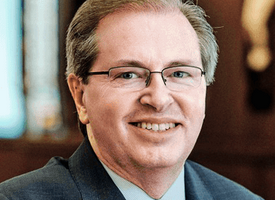This week is Celebrate Catholic Schools Week across America. Catholic schools enrolled more than 5 million students in the mid-1960s but today just 1.6 million. Many things have contributed to this decline including family economic stress, rising college costs, and other factors. And, of course, massive secularization.
The stakes are really high. Now, more than ever, this world needs children who embrace the truths of our Church, who understand that God created us male and female, who believe in the sanctity of life, who see the human dignity of each of God’s children, and who believe in objective truth…
In order to thrive once again, Catholic schools must strive, in partnership with parents, for excellence in the formation of the whole person. Because the core purpose of Catholic schools is to teach our faith, imitating public schools will not lead to thriving Catholic schools. And, after all, why should parents pay tuition to a Catholic school if it is indistinguishable from their public school?
The stakes are really high. Now, more than ever, this world needs children who embrace the truths of our Church, who understand that God created us male and female, who believe in the sanctity of life, who see the human dignity of each of God’s children, and who believe in objective truth.
There will be challenges, of course, when we stick to our mission of teaching the Catholic faith.
In 5th grade, children generally believe what their parents teach them about religion. But by 6th and 7th grade, they have questions, as they should. And the Catholic Church which has survived two millennia is well-prepared to answer them.
But it is crucial that the persons to whom students pose their questions are properly catechized and serious about their faith. What if we didn’t ensure there was a knowledgeable and believing Catholic at the front of the room? Or what about a principal whose faith is at best lukewarm? What if a science teacher is contradicting the theology teacher? What if a faculty member is more interested in politics than Church teaching? Children will immediately see the contradictions and the hypocrisy.
It’s our obligation to make sure that we create a faithful environment in which a parent can be assured that their child’s Catholic faith will be retained – if not deepened – and definitely not destroyed.
In short, we must put the Catholic back in Catholic schools.
Here are six practical ways to do so:
First, the leader of a Catholic school must not only be Catholic but also be a true witness to the faith; someone who is a role model for children and an evangelist for our faith.
Second, the school’s academic program needs to reflect the full contribution of the Catholic intellectual tradition. One cannot conceive of Western Civilization without the existence of the Catholic Church. The Church has made significant contributions as diverse as art, architecture, music, literature, philosophy and science. A Catholic school in which the only Catholic aspect of the curriculum is the daily religion class is treating Catholicism as a mere footnote. This approach fails to do justice to Catholicism’s contribution to culture and to the history of the world, and effectively turns over the rest of the day to secularism.
Third, the faculty of the school needs to be comprised of accomplished individuals who represent the faith in their words…but also in the lives they lead.
Fourth, political correctness – which first took hold in our colleges and universities – is now infiltrating secondary schools. This trend has been openly embraced in public schools across America. In contrast, a truly Catholic school must embrace truth not relativism; must see individuals as the creation of God and not merely members of identity groups; and must uphold the human dignity of all lives from conception to natural death – regardless of the values of popular culture.
Fifth, a Catholic school needs to ensure that children are given the opportunity to build positive relationships with seminarians, priests, and religious brothers and sisters. These relationships are a central part of instilling our faith in children…and for the salvation of their souls.
Lastly, the children in our schools need to see vividly that Catholicism is at its core a joyful and optimistic faith. Through the sacrament of reconciliation, for example, no matter what mistakes we make or how many times we stumble on our path, we have a second chance.
Our culture is under attack and our values are eroded. Our faith is often mocked. We must restore our Catholic schools in order to be a force for good amid a broader cultural decline. If so, we will plant the seeds for a brighter, more faithful future for the Church and for America.
————————————————
Thomas W. Carroll is Superintendent, Office of Catholic Schools, in the Archdiocese of Boston.
————————————————
RELATED RESOURCES:



You must be logged in to post a comment.